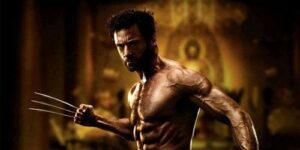
True to the mutant healing power that makes him nearly immortal, the Wolverine has proved remarkably resilient on film. Starting with the first X-Men movie, which kick-started the age of cinematic superheroes that continues today, Hugh Jackman has played Logan six times (including cameos), making him almost as well known as icons like Batman, Superman, and Spider-Man.
The Wolverine even survived X-Men: The Last Stand and X-Men Origins: Wolverine, hit movies shoddy enough to keep the X-Men label out of the title of his newest adventure, simply called The Wolverine. Moreover, the movie — which opened this weekend with mixed numbers in the US and overseas, feels strangely new, an X-Men movie mostly unencumbered by the rich and sometimes convoluted X-Men mythology.
The film opens on World War II-era Nagasaki, where we first glimpse Logan as a pair of eyes, peering out from a boarded-up well, while bombers approach and a small group of Japanese soldiers prepares for ritual suicide. The reason for his appearance here remains elegantly unexplained, but when Yashida (Ken Yamamura) hesitates to kill himself, Logan protects him from the bomb’s blast.
Years later, following the events of the original X-Men features, an elderly Yashida (Haruhiko Yamanouchi), now a powerful businessman, summons Wolverine, who has been living a solitary and tortured existence as a mountain man/hobo. There, on his deathbed, Yashida offers to relieve his savior of those pesky healing powers. Of course, Yashida has an ulterior motive, predictably drawing Wolverine into a shadowy web of family business, Yakuza assassination plots, and malfunctioning superpowers; specifically, Logan’s healing factor begins to slow just when he needs it most. Through all of this, our hero attempts to protect Yashida’s innocent granddaughter Mariko (Tao Okamoto) and also gains a sidekick in Yukio (Rila Fukushima), who dresses like a fanboy fantasy but acts like a capable action hero.
The plot mechanics are more serviceable and plentiful than inspired, though they do offer a nice respite from the usually epic stakes of other X-Men adventures. Director James Mangold and credited screenwriters Scott Frank and Mark Bomback develop Logan as a complex individual, rather than just using him as to provide still more hokey backstory and empty action.
For example, when present-day Wolverine first shows up, he’s in the same Canadian forest we’ve seem in so many other Fox superhero productions. But this movie makes good use of the setting in a wonderfully quiet shot where a bear emerges in the background to walk through the forest alongside Wolverine, keeping a respectful distance and setting up a dichotomy between Logan the man and Wolverine the beast. Even the movie’s most obvious instances of franchise service, scenes where Logan’s deceased love Jean Gray (Famke Janssen) appears to him in dreams, illustrate his melancholy more than they extend the brand. As before, Wolverine is by turns angry, taciturn, alienated, and wisecracking, but here, these traits aren’t generic characterization, but instead, show how his post-X-Men life is haunted and withdrawn, spliced with just enough superhero vigor to stave off self-seriousness.
The scaled down approach also helps to refresh the movie’s action-adventure quotient. Mangold’s last big action movie for Fox, Knight and Day, featured some neat ideas for stunts, but disappointingly cheap executions. The Wolverine doesn’t try to throw too much spectacle on the screen. Instead, it integrates small and big moments, building from one to another: a villains’ attack on a funeral turns into a multi-character shoot-out before running into a street chase, which then leads into an elaborate fight atop a Japanese bullet train. Though it offers the movie’s least convincing effects, this scene is also inventive and exhilarating, as Wolverine and his foes must stab into the roof of the train (the bad guys with knives, Logan with his claws) to keep from blowing off the train into the air.
If this sounds like kind of a silly moment for a movie about a soul-searching outcast running afoul of the Yakuza, well, that is how The Wolverine works: it pauses for reflection in between moments of athletic action choreography. There may be a little too much of each: Wolverine’s conversations with Mariko don’t display much color or wit, and he engages in too many bloodless claw-stabbings. But even such excesses feel controlled and in sync with the comic book source, making Jackman’s version of the character look ready for another issue.

